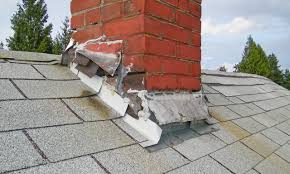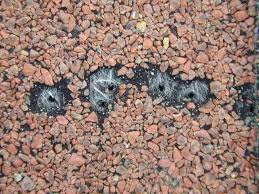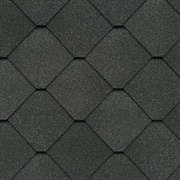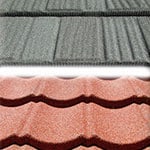WARNING SIGNS of Roof Problems
Most properly installed shingle roofs will last at least 20 years before showing any significant wear and tear, depending on the type of shingle and the application materials used. Factors such as climate and ventilation will also play a role in the life of your roof. If your roof shows signs of one or more of the symptoms shown below, Ja-Mar Roofing can give your roof a thorough examination and let you know if you are in need of a new roof, or just a few repairs.
What do water spots on ceiling mean?
- Caused by leaks in roof
- Check attic or crawlspace for leaks in deck
- Check chimney and vents for cracks in flashing
- Check rafters for leaks that travel away from original source
- Check roof for damaged shingles
What causes damaged flashing?

- Caused by improper installation
- Caused by drying and cracking
- Can usually be repaired without replacing roof
What causes missing shingles?
- Caused by improper fastening
- Caused by exposure to high winds
- Can usually be replaced individually
What causes asphalt shingles to buckle or curl?
- Caused by improperly applied felt (buckling)
- Caused by movement in deck (buckling)
- Caused by undersaturation of felt in organic-based shingles (curling)
Why Do Roof Shingles Blister?

- Caused by moisture in shingles
- Caused by excessive use of asphalt plastic cement
What causes algae on roof shingles?
- Caused by growth of airborne algae deposited on roof
- Common problem in warm, humid climates
- Algae resistant shingles available regionally
What is granule loss on a roof?
- On newly applied shingles, a certain number of loose granules is normal
- On aging shingles, missing granules indicate need for replacement
What Are the Signs of a Rotting Roof?
- Caused by absorption of moisture by mat at the core of the shingle
- Common problem with organic-based shingles.
Roofing Systems
…in a Nutshell
What is a Composition shingle?

Composite shingles are a widely used system designed for roofs having a slope of 3″ or greater, measured by the roof slope rise over every 12″ of horizontal travel. The typical installation has an underlayment of #15 or #30 roof felt. This layer is covered by composition shingle, which contains with asphalt saturates and a layer of granules imbedded in the matting. Laminated shingle – consisting of two layers of fiberglass-reinforced matting’s that are laminated into a single unit – is most commonly used. Other types of shingle are available, and they come in a variety of styles and colors.
- Laminated, consisting of 2 or more layers
- Life expectancy: 20 to 50 years
What is Tile Roofing?

Tile Roofing is a system consisting of shingle or tile materials made of slate, terracotta, concrete, metal or a combination of materials to create an individual roof. It is installed much like a composition shingle roof – on a sloped surface.
- Used to create an individual shingle
- R ratings are minimal for all
What is a SINGLE-PLY THERMOPLASTIC MEMBRANES?
Single-ply thermoplastic membranes are systems mechanically attached or adhered to the roof deck. These are available in 50, 60 or 80 mil thickness. All seams and penetrations are jointed using hot air welding to form a homogeneous system. Most roofs are installed using the white surface color, but other colors are available.
- Single-ply
- Qualifies as a cool roof
- Life expectancy: 20 to 25 years, with a lifetime manufacturer’s warranty
- Recyclable
- No open flame or smell during installation
- TPO (Thermo Plastic Olefin)
- PUC (Polyvinyl Chloride)
What is MODIFIED BITUMEN?
Modified Bitumen is a waterproof membrane consisting of a base sheet of fiberglass matte and one to two layers of modified-bitumen-saturated polyester matting. The membrane can be installed by one of two methods: a mopping of self-adhering hot asphalt or heating and melting with a propane torch. The membrane is subject to ultraviolet damage. Coating it with aluminum roof paint or installing a top ply consisting of a modified-bitumen sheet with granular surfacing will afford the necessary protection.
- APP (A tactic polypropylene) torch applied
- SBS (styrene butadiene) mop, torch, self-adhered (SA)
What is BUILT-UP ASPHALT?
Built-up Asphalt is a waterproof membrane consisting of alternate layers of roofing felt and hot asphalt. Today most roofing felt is fiberglass matting with asphalt saturate. The typical system consists of a base sheet and two or three layers of ply sheet. After this system is installed, it is covered with a flood coat of hot asphalt over which clean gravel or a mineral-surfaced fiberglass cap sheet is installed. Either surfacing provides for protection from ultraviolet damage and gives the roof its required fire rating.
How to Size Up a Roofing Contractor
- A roof comprises two or more layers of materials and is never premade or premanufactured. Rather, each roofing layer is painstakingly laid by hand in a series of detailed, technical steps. These layers must accommodate the contours of the roof and the environment around the structure. A successful installation begins and ends with the services of a professional roofing contractor.
- Manufacturers of roofing materials routinely develop new products that perform better than their predecessors and have specific, strict installation guidelines. Make sure the roofing contractor you are considering not only is able to offer you a choice of the latest roofing products but also has experience in the installation of similar roofing systems.
- Roof flashing are vital for all roof systems. Most early roof failures result from incorrectly installed flashing. A quality-conscious roofing contractor will insist that there are no short-cuts to properly flashing your roof.
- The skills and experience of the roofing crew are critical to a quality job. Ask the roofing company about its employee recruitment and screening practices and about what training its employees undergo.
- A roofing company should exhibit integrity in every product it represents, sells and manufactures. If the company has faith in its products and materials, it will stand behind them.
- Look for performance, not just sunshine. Sometimes bad weather – rain, heat, moisture, wind – will jeopardize a job. If the conditions are questionable, a reputable roofing contractor will reschedule to work to avoid an unsatisfactory consequence. Before committing to roofing contractor, ask what if….
- Neatness counts. Undeniably, roofing is a messy job. But professional preparation, such as tarping bushes and protecting building exteriors, is essential. So is clean-up. Make sure the roofing company you contract with makes the commitment in writing.
- Don’t buy what you don’t need. An ethical roofing contractor won’t try to sell you a new roof when all you need is a patch repair. When in doubt, get opinions from several reputable contractors.
- A reliable contractor offers not just an excellent product but service and information. A company that truly respects a customer makes itself accessible and responsive to customers’ questions and concerns.
- When a customer requests financial assistance for a needed service, a reputable roofing contractor should be able to suggest or offer a variety of payment options with favorable terms.
Contents
- WARNING SIGNS of Roof Problems
- What do water spots on ceiling mean?
- What causes damaged flashing?
- What causes missing shingles?
- What causes asphalt shingles to buckle or curl?
- Why Do Roof Shingles Blister?
- What causes algae on roof shingles?
- What is granule loss on a roof?
- What Are the Signs of a Rotting Roof?
- Roofing Systems
- What is a Composition shingle?
- What is Tile Roofing?
- What is a SINGLE-PLY THERMOPLASTIC MEMBRANES?
- What is MODIFIED BITUMEN?
- What is BUILT-UP ASPHALT?
- How to Size Up a Roofing Contractor


